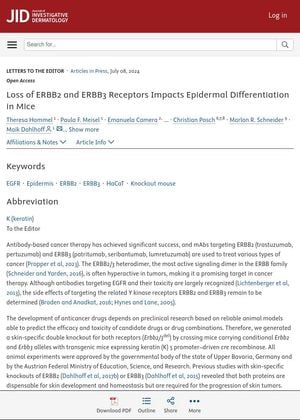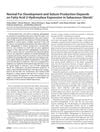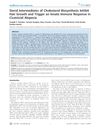Loss of ERBB2 and ERBB3 Receptors Impacts Epidermal Differentiation in Mice
July 2024
in “
Journal of Investigative Dermatology
”

TLDR Losing both ERBB2 and ERBB3 receptors in mice causes significant skin problems and inflammation.
The study examined the effects of deleting ERBB2 and ERBB3 receptors in mice, revealing significant impacts on epidermal differentiation, inflammation, and sebaceous gland function. Mice with both receptors knocked out exhibited thicker epidermis, increased sebaceous gland size, skin lesions, elevated inflammatory cytokine IL-1A, and reduced anti-inflammatory cytokine IL-10. Hair lipid composition was altered, showing reduced levels of several lipids. In human keratinocyte cell lines, deletion of these receptors led to increased expression of differentiation markers and altered cell behavior. The findings suggest that ERBB2 and ERBB3 are crucial for maintaining normal epidermal function and differentiation, with potential implications for cancer therapy despite associated skin side effects.



